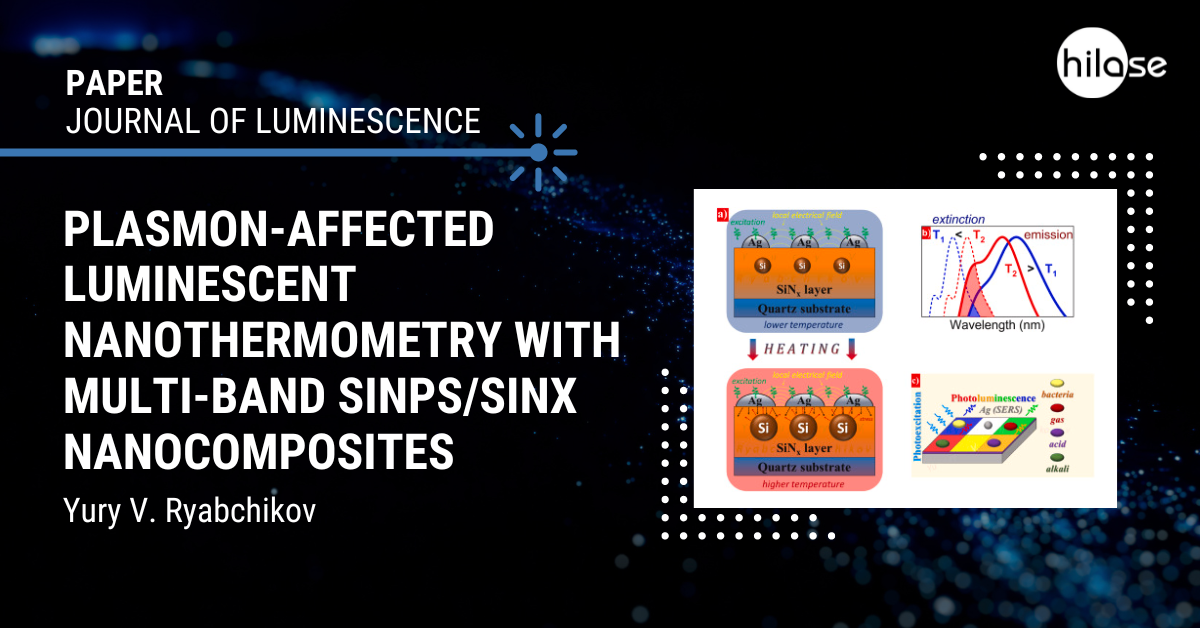Our colleague from the Scientific Laser Applications (SLA) department, Yury Ryabchikov (Laser material processing), published a new article in the 260th volume of the Journal of Luminescence.

The article, titled Plasmon-affected luminescent nanothermometry with multi-band SiNPs/SiNX nanocomposites, focuses on the impact of plasmonic nanostructures on silicon nitride nanothermometry.
The design of luminescent multi-functional nanoplatforms that can be simultaneously employed for various applications is still an important research task nowadays. Nanosilicon is one of the most promising nanomaterial having unique structural and optoelectronic properties that can be used in biomedicine, optoelectronics, sensing and nanothermometry. However, its properties do not allow the creation of one luminescent multi-functional nanoplatform requiring merging of different nanomaterials. In this work, temperature-sensitive silicon-based nanocomposites with tuned multi-band emission are demonstrated. One can easily achieve the change of their single- and multi-band photoluminescence spectral position from ∼1.6 eV to ∼2.9 eV by varying the experimental parameters. Moreover, the “white” emission of silicon nitride is also observed that can be further applied for sensing or optoelectronic applications. Furthermore, the presence of silver nanoparticles leads to 80% increase of the temperature sensitivity of the photoluminescence maximum position (from ∼540 μeV/°C to ∼975 μeV/°C). The plasmonic nanostructures also considerably modify the ratiometric temperature behavior of nanocomposite emission. The shown findings suggest perspectives of silicon-based nanostructures as multi-task luminescent nanoplatforms in the fields of nanothermometry, molecule sensing, optoelectronics and biomedicine.








